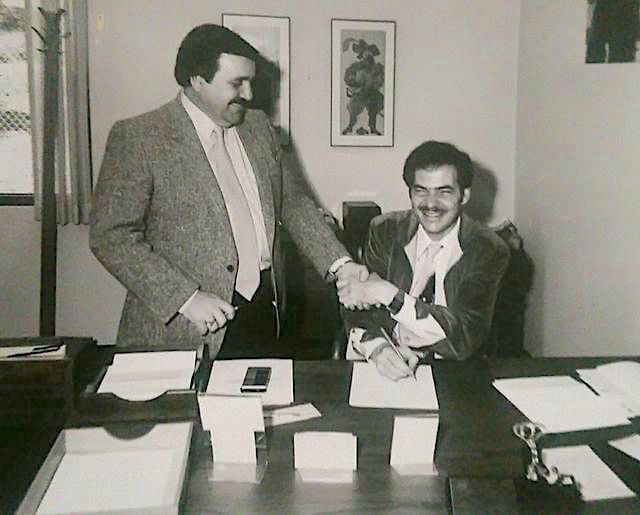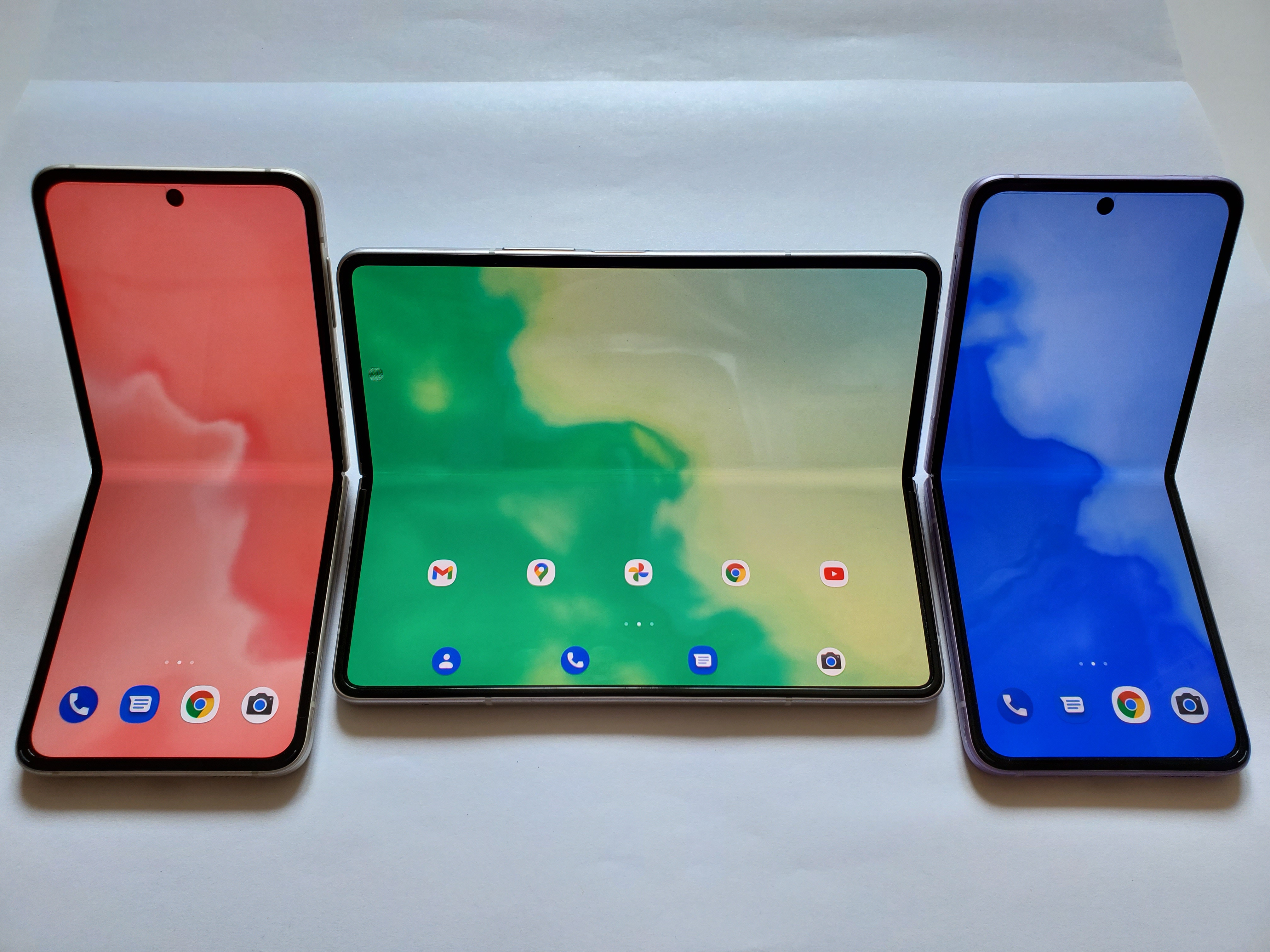|
Luggable
A portable computer is a computer designed to be easily moved from one place to another and included a display and keyboard together, with a single plug, much like later desktop computers called '' all-in-ones'' (AIO), that integrate the system's internal components into the same case as the display. The first commercially sold portable might be the MCM/70, released 1974. The next major portables were the IBM 5100 (1975), Osborne's CP/M-based Osborne 1 (1981) and Compaq's , advertised as 100% IBM PC compatible Compaq Portable (1983). These luggable computers still required a continuous connection to an external power source; this limitation was later overcome by the laptop. Laptops were followed by lighter models, so that in the 2000s mobile devices and by 2007 smartphones made the term almost meaningless. The 2010s introduced wearable computers such as smartwatches. Portable computers, by their nature, are generally microcomputers. Larger portable computers were common ... [...More Info...] [...Related Items...] OR: [Wikipedia] [Google] [Baidu] |
Laptop
A laptop, laptop computer, or notebook computer is a small, portable personal computer (PC) with a screen and alphanumeric keyboard. Laptops typically have a clam shell form factor with the screen mounted on the inside of the upper lid and the keyboard on the inside of the lower lid, although 2-in-1 PCs with a detachable keyboard are often marketed as laptops or as having a "laptop mode". Laptops are folded shut for transportation, and thus are suitable for mobile use. They are so named because they can be practically placed on a person's lap when being used. Today, laptops are used in a variety of settings, such as at work, in education, for playing games, web browsing, for personal multimedia, and for general home computer use. As of 2022, in American English, the terms ''laptop computer'' and ''notebook computer'' are used interchangeably; in other dialects of English, one or the other may be preferred. Although the terms ''notebook computers'' or ''notebooks'' or ... [...More Info...] [...Related Items...] OR: [Wikipedia] [Google] [Baidu] |
Osborne Computer Corporation
The Osborne Computer Corporation (OCC) was a pioneering maker of portable computers. It was located in the Silicon Valley of the southern San Francisco Bay Area in California. The Henry Ford Blog: "The Rise and Fall of the Osborne Computer Corporation" April 16, 2015 — with images. Adam Osborne, the founder of the company, developed, with design work from , the world's first mass-produced portable computer in 1981. History Osborne 1 [...More Info...] [...Related Items...] OR: [Wikipedia] [Google] [Baidu] |
Laptop
A laptop, laptop computer, or notebook computer is a small, portable personal computer (PC) with a screen and alphanumeric keyboard. Laptops typically have a clam shell form factor with the screen mounted on the inside of the upper lid and the keyboard on the inside of the lower lid, although 2-in-1 PCs with a detachable keyboard are often marketed as laptops or as having a "laptop mode". Laptops are folded shut for transportation, and thus are suitable for mobile use. They are so named because they can be practically placed on a person's lap when being used. Today, laptops are used in a variety of settings, such as at work, in education, for playing games, web browsing, for personal multimedia, and for general home computer use. As of 2022, in American English, the terms ''laptop computer'' and ''notebook computer'' are used interchangeably; in other dialects of English, one or the other may be preferred. Although the terms ''notebook computers'' or ''notebooks'' or ... [...More Info...] [...Related Items...] OR: [Wikipedia] [Google] [Baidu] |
Compaq Portable
The Compaq Portable was an early portable computer which was one of the first IBM PC compatible systems. It was Compaq Computer Corporation's first product, to be followed by others in the Compaq Portable series and later Compaq Deskpro series. It was not simply an 8088- CPU computer that ran a Microsoft DOS as a PC "work-alike", but contained a reverse-engineered BIOS, and a version of MS-DOS that was so similar to IBM's PC DOS that it ran nearly all its application software. The computer was also an early variation on the idea of an " all-in-one". It became available two years after the similar, but CP/M-based, Osborne 1 and Kaypro II. Columbia Data Products' MPC 1600 "Multi Personal Computer" had come out in June 1982. Other "work-alikes" included the MS-DOS and 8088-based, but not entirely IBM PC software compatible, Dynalogic Hyperion, Eagle Computer's Eagle 1600 series, including the Eagle Spirit portable, and the Corona personal computer The latter two companies were t ... [...More Info...] [...Related Items...] OR: [Wikipedia] [Google] [Baidu] |
Compaq Portable
The Compaq Portable was an early portable computer which was one of the first IBM PC compatible systems. It was Compaq Computer Corporation's first product, to be followed by others in the Compaq Portable series and later Compaq Deskpro series. It was not simply an 8088- CPU computer that ran a Microsoft DOS as a PC "work-alike", but contained a reverse-engineered BIOS, and a version of MS-DOS that was so similar to IBM's PC DOS that it ran nearly all its application software. The computer was also an early variation on the idea of an " all-in-one". It became available two years after the similar, but CP/M-based, Osborne 1 and Kaypro II. Columbia Data Products' MPC 1600 "Multi Personal Computer" had come out in June 1982. Other "work-alikes" included the MS-DOS and 8088-based, but not entirely IBM PC software compatible, Dynalogic Hyperion, Eagle Computer's Eagle 1600 series, including the Eagle Spirit portable, and the Corona personal computer The latter two companies were t ... [...More Info...] [...Related Items...] OR: [Wikipedia] [Google] [Baidu] |
Osborne 1
The Osborne 1 is the first commercially successful portable computer, released on April 3, 1981 by Osborne Computer Corporation. It weighs , cost US$1,795, and runs the CP/M 2.2 operating system. It is powered from a wall socket, as it has no on-board battery, but it is still classed as a portable device since it can be hand-carried when the keyboard is closed. The computer shipped with a large bundle of software that was almost equivalent in value to the machine itself, a practice adopted by other CP/M computer vendors. Competitors quickly appeared, such as the Kaypro II. History The Osborne 1 was developed by Adam Osborne and designed by Lee Felsenstein, first announced in early 1981. Osborne, an author of computer books decided that he wanted to break the price of computers. The computer's design was based largely on the Xerox NoteTaker, a prototype developed at Xerox PARC in 1976 by Alan Kay. It was designed to be portable, with a rugged ABS plastic case and a handle. The Os ... [...More Info...] [...Related Items...] OR: [Wikipedia] [Google] [Baidu] |
IBM PALM Processor
The PALM (Put All Logic in Microcode) is a 16-bit central processing unit (CPU) developed by IBM. It was used in the IBM 5100 Portable Computer, a predecessor of the IBM PC, and the IBM 5110 and IBM 5120 follow-on machines. It is likely PALM was also used in other IBM products as an embedded controller. IBM referred to PALM as a ''microprocessor'', though they used that term to mean a processor that executes microcode to implement a higher-level instruction set, rather than its conventional definition of a CPU on an integrated circuit. The PALM processor was a circuit boardsalvaging a huge IBM 1130 APL program containing 13 bipolar gate arrays packaged in square metal cans, 3 conventional transistor–transistor logic (TTL) ICs in dual in-line packages, and 1 round metal can part. The PALM was used to implement an emulator, which in turn could run machine instructions originally written for other machines; this is how IBM System/360 APL ran on the ''5100''. PALM has a 1 ... [...More Info...] [...Related Items...] OR: [Wikipedia] [Google] [Baidu] |
Mobile Computing
Mobile computing is human–computer interaction in which a computer is expected to be transported during normal usage, which allows for the transmission of data, voice, and video. Mobile computing involves mobile communication, mobile hardware, and mobile software. Communication issues include ad hoc networks and infrastructure networks as well as communication properties, protocols, data formats, and concrete technologies. Hardware includes mobile devices or device components. Mobile software deals with the characteristics and requirements of mobile applications. Main principles * Portability: Devices/nodes connected within the mobile computing system should facilitate mobility. These devices may have limited device capabilities and limited power supply but should have a sufficient processing capability and physical portability to operate in a movable environment. * Connectivity: This defines the quality of service (QoS) of the network connectivity. In a mobile computing ... [...More Info...] [...Related Items...] OR: [Wikipedia] [Google] [Baidu] |
CP/M
CP/M, originally standing for Control Program/Monitor and later Control Program for Microcomputers, is a mass-market operating system created in 1974 for Intel 8080/ 85-based microcomputers by Gary Kildall of Digital Research, Inc. Initially confined to single-tasking on 8-bit processors and no more than 64 kilobytes of memory, later versions of CP/M added multi-user variations and were migrated to 16-bit processors. The combination of CP/M and S-100 bus computers became an early standard in the microcomputer industry. This computer platform was widely used in business through the late 1970s and into the mid-1980s. CP/M increased the market size for both hardware and software by greatly reducing the amount of programming required to install an application on a new manufacturer's computer. An important driver of software innovation was the advent of (comparatively) low-cost microcomputers running CP/M, as independent programmers and hackers bought them and shared their crea ... [...More Info...] [...Related Items...] OR: [Wikipedia] [Google] [Baidu] |
Backplane
A backplane (or "backplane system") is a group of electrical connectors in parallel with each other, so that each pin of each connector is linked to the same relative pin of all the other connectors, forming a computer bus. It is used as a backbone to connect several printed circuit boards together to make up a complete computer system. Backplanes commonly use a printed circuit board, but wire-wrapped backplanes have also been used in minicomputers and high-reliability applications. A backplane is generally differentiated from a motherboard by the lack of on-board processing and storage elements. A backplane uses plug-in cards for storage and processing. Usage Early microcomputer systems like the Altair 8800 used a backplane for the processor and expansion cards. Backplanes are normally used in preference to cables because of their greater reliability. In a cabled system, the cables need to be flexed every time that a card is added or removed from the system; this flexing even ... [...More Info...] [...Related Items...] OR: [Wikipedia] [Google] [Baidu] |
Motherboard
A motherboard (also called mainboard, main circuit board, mb, mboard, backplane board, base board, system board, logic board (only in Apple computers) or mobo) is the main printed circuit board (PCB) in general-purpose computers and other expandable systems. It holds and allows communication between many of the crucial electronic components of a system, such as the central processing unit (CPU) and memory, and provides connectors for other peripherals. Unlike a backplane, a motherboard usually contains significant sub-systems, such as the central processor, the chipset's input/output and memory controllers, interface connectors, and other components integrated for general use. ''Motherboard'' means specifically a PCB with expansion capabilities. As the name suggests, this board is often referred to as the "mother" of all components attached to it, which often include peripherals, interface cards, and daughterboards: sound cards, video cards, network cards, host bus adapters, TV t ... [...More Info...] [...Related Items...] OR: [Wikipedia] [Google] [Baidu] |




.jpg)



